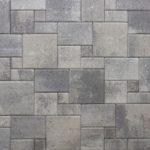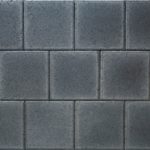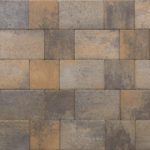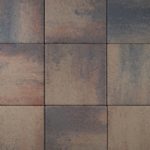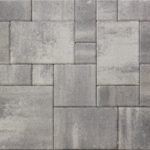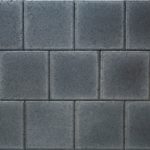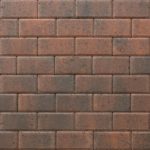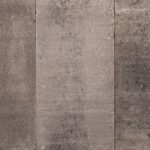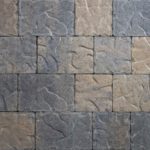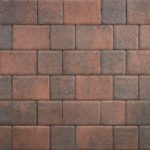The size, weight and thickness of the stones are features that make La Pietra & La Lastra special to install. Therefore, the following instructions must be adhered to for satisfactory results to be obtained.
Tools Needed:
- Shovel
- Paver Lifting Clamp
- Rubber Mallet
- Hand Tamper
- Stakes/Stringline
- Plate Compactor
- Level
- Snap-Edge®

Materials Needed:
Gravel base: ¾” minus crushed rock; La Pietra/La Lastra application requires a 4″-6″ compacted base, as they are to be used for pedestrian traffic only.
Bedding Sand: Coarse concrete sand is recommended. 1″ of sand setting bed is required. One yard of sand will cover approximately 200 square feet.
Pavers: Determine the total square footage of your project (length x width = square feet) adding 5-10% for cuts and extra pavers that might be needed later. To estimate the number of pieces you will need, multiply the square footage by the pieces per square foot. (Square foot x Pieces per square foot = Total number of pavers needed)
Edge Restraint: All exposed edges (not up against a permanent structure) must be restrained. Measure the linear feet of all exposed edges to determine the amount of edge restraint needed.
Installation:
- Measure and stake the desired area you intend to pave. Mark the outline of your project with stakes every 4-6″ and at each corner; these stakes should be 6” outside the edge of the planned area. Tie a string line at the level you want your finished project height.
- Excavate 4″-6″ beyond finished size, remove any loose dirt or sod to at least 5″- 6″ below the finished grade. This makes room for 3″-4″ of compacted gravel, 1″ of sand and the paving stones. The more time and effort you put into your base preparation, the better your paving stone project will look.
- Compact sub-grade, backfill with crushed ¾” minus aggregate and compact again. Slope and grade are important for proper drainage. Assure a minimum of ¼” per foot drop, not to exceed ½” per foot. When finished with the base, it should be smooth and flat and reflect the final grade of your pavers.
- Lay screed rails (1″ outside diameter pipe or square tube) as guides, spread sand between rails and then use a straight wood 2″ x 4″ crossways to spread sand smooth and level to an even 1″ depth. Remove the rails and fill in the voids left by the guides with sand and trowel smooth by hand or with the backside of a push broom. Don’t walk on or compact the sand.
- Determine your laying pattern. Starting in a square corner with a permanent edge, place La Pietra/La Lastra paving stones down on the sand bed. As the product is placed in the sand, it may be necessary to remove individual stones and adjust their height by adding and removing sand to acquire the stone-to-stone height you would like your project to have. As sand is added to level the stones, be sure to level under entire surface of stones to stabilize them. This extra precaution is necessary to obtain a surface that is safe and comfortable to walk on and use. Stones may be marked with a wax crayon and cut with a diamond blade wet saw. Lay the stones with 1/8″ to 1/4″ of the gap between the stones. On the larger stones, it may be necessary to use a paver lifting clamp when lifting.
- Install plastic edge restraint (or similar product) along edges that are not up against a permanent structure. Edge restraint should rest on the compacted aggregate base and contain the sand and maintain the position of the paving stone.
- Sweep paver joints full of concrete sand.
- Seal the stones with one of the following sealers: MASCO Cure and Seal 25%, Surebond 7000, Surebond 9000. The installation instructions for each specific sealer must be adhered to.
Important notes for Installation and Use:
- La Pietra/La Lastra are to be used for pedestrian traffic only.
- Plated compactors normally used in the installation process are not to be used in any way on the surface of La Pietra.
- The natural rough stone surface of La Pietra is not an approved surface for “ADA” use.
- Obtain a satisfactory surface stone to stone height adjustment by adding or removing bedding sand while setting La Pietra/La Lastra.
- All projects should be sealed with one of the three recommended sealers.
- For safe and satisfactory results, this product must be installed by experienced installers.


